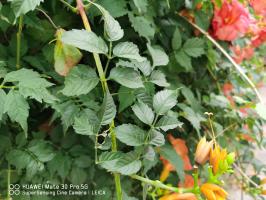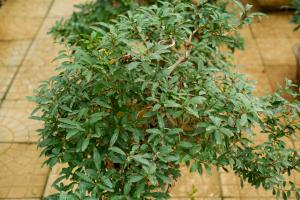How to Kill Ants Nests in Plant Pots
If you are an avid gardener or houseplant enthusiast, you have probably encountered ants nesting in your plant pots from time to time. While ants have some benefits in the garden, such as pollinating flowers and aerating soil, they can also be a nuisance when they build nests inside your plants, and even worse, they can bring pests like aphids with them. Here are some effective ways to kill ants nests in plant pots.
Identify the Ant Type
Before you start treating the ant infestation, it’s important to identify the ant species that have taken up residence in your plant pots. Different types of ants have different preferences, and some are easier to control than others. For instance, if you notice tiny black ants, you may be dealing with the pavement ant species, which likes to live in soil and expand their nests vertically. Meanwhile, Argentine ants prefer to set up colonies near water sources, pets’ food dishes, and indoor plants. You can research online or contact a pest control expert to identify the specific ant species and choose the most appropriate treatment.
Use Mound Treatment
If you notice a visible ant mound in your plant pot or around it, you can use mound treatment products to kill the ants. These products contain chemicals that kill the ants quickly and can prevent others from returning. For instance, you can use granular ant bait that you sprinkle on and around the mound or liquid ant killers that you pour directly into the mound. Be sure to follow the instructions carefully and avoid using too much or too little of the product.
Try Non-Toxic Remedies
If you prefer to use natural and non-toxic solutions to kill ants nests in plant pots, you have several options to choose from. One common method is to douse the soil with a solution of water and vinegar, which can make the soil inhospitable for ants but won't harm the plants. You can also sprinkle diatomaceous earth around the base of the plant, which is made of fossilized algae and is abrasive to ants’ exoskeletons, causing them to dry out and die. Another option is to use essential oils like peppermint, cinnamon, or citrus oil, which have strong scents that repel ants.
Prevent Future Infestations
Once you have killed the ants nests in your plant pots, you should take steps to prevent future infestations by eliminating attractants and sealing entry points. To eliminate attractants, make sure you remove any spilled food or debris near the plant pots, store pet food in sealed containers, and keep the pots clean. To seal entry points, use caulk or weatherstripping to seal gaps around windows, doors, and vents, and use ant bait stations to trap any scouts that may wander inside. You can also set up barriers around the pots using natural materials like crushed eggshells, coffee grounds, or cedar chips, which ants detest.
Conclusion
Ants nests in plant pots can be frustrating to deal with, but with the right treatment and prevention strategies, you can keep your plants healthy and pest-free. Whether you opt for chemical or natural solutions, be sure to follow the instructions carefully and take safety precautions to avoid harming yourself or the environment. With patience and diligence, you can say goodbye to ants and hello to thriving plants.

 how many times do yo...
how many times do yo... how many planted tre...
how many planted tre... how many pine trees ...
how many pine trees ... how many pecan trees...
how many pecan trees... how many plants comp...
how many plants comp... how many plants can ...
how many plants can ... how many plants and ...
how many plants and ... how many pepper plan...
how many pepper plan...






























